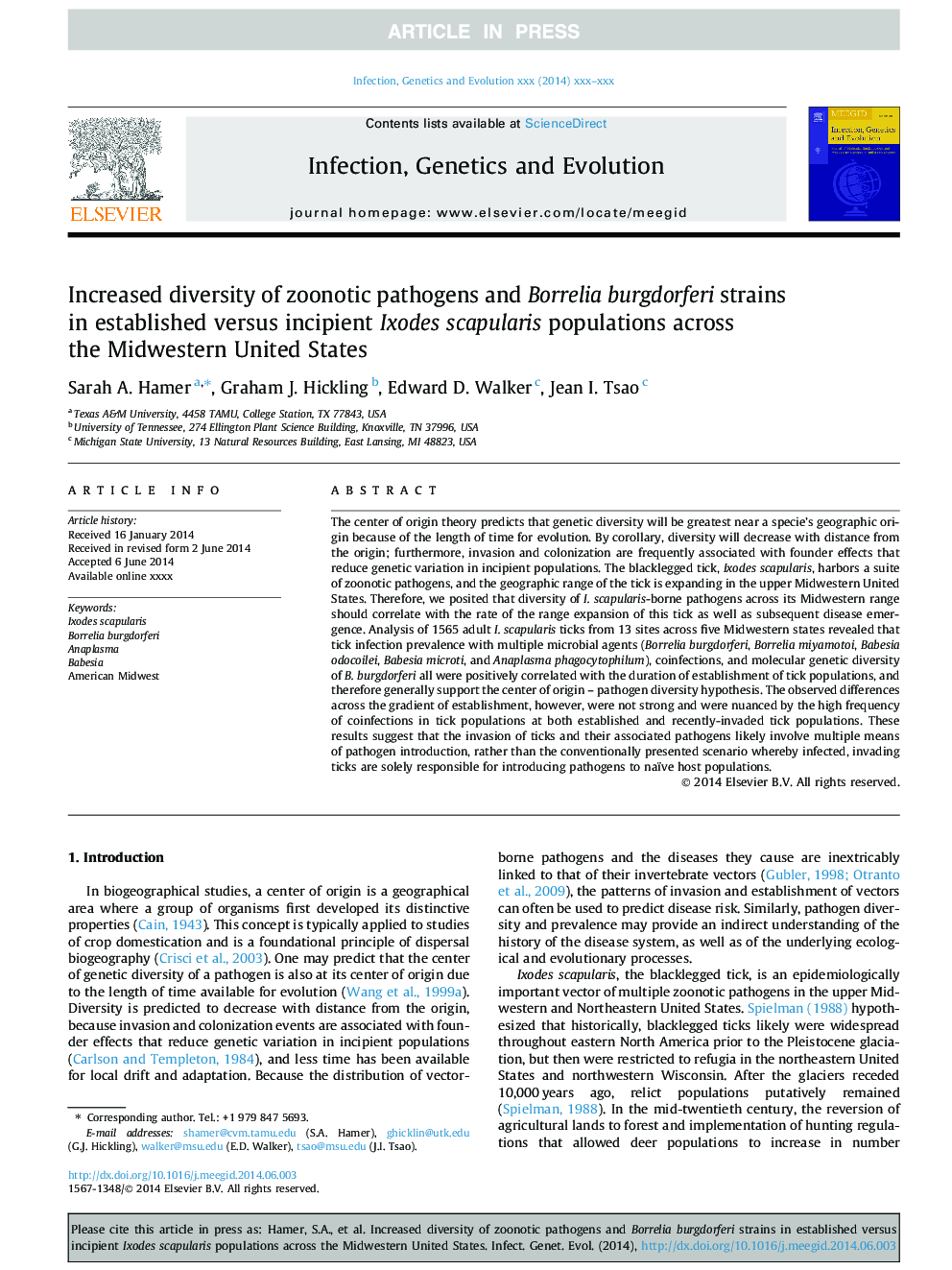| کد مقاله | کد نشریه | سال انتشار | مقاله انگلیسی | نسخه تمام متن |
|---|---|---|---|---|
| 5909856 | 1570176 | 2014 | 12 صفحه PDF | دانلود رایگان |
عنوان انگلیسی مقاله ISI
Increased diversity of zoonotic pathogens and Borrelia burgdorferi strains in established versus incipient Ixodes scapularis populations across the Midwestern United States
دانلود مقاله + سفارش ترجمه
دانلود مقاله ISI انگلیسی
رایگان برای ایرانیان
موضوعات مرتبط
علوم زیستی و بیوفناوری
علوم کشاورزی و بیولوژیک
بوم شناسی، تکامل، رفتار و سامانه شناسی
پیش نمایش صفحه اول مقاله

چکیده انگلیسی
The center of origin theory predicts that genetic diversity will be greatest near a specie's geographic origin because of the length of time for evolution. By corollary, diversity will decrease with distance from the origin; furthermore, invasion and colonization are frequently associated with founder effects that reduce genetic variation in incipient populations. The blacklegged tick, Ixodes scapularis, harbors a suite of zoonotic pathogens, and the geographic range of the tick is expanding in the upper Midwestern United States. Therefore, we posited that diversity of I. scapularis-borne pathogens across its Midwestern range should correlate with the rate of the range expansion of this tick as well as subsequent disease emergence. Analysis of 1565 adult I. scapularis ticks from 13 sites across five Midwestern states revealed that tick infection prevalence with multiple microbial agents (Borrelia burgdorferi, Borrelia miyamotoi, Babesia odocoilei, Babesia microti, and Anaplasma phagocytophilum), coinfections, and molecular genetic diversity of B. burgdorferi all were positively correlated with the duration of establishment of tick populations, and therefore generally support the center of origin - pathogen diversity hypothesis. The observed differences across the gradient of establishment, however, were not strong and were nuanced by the high frequency of coinfections in tick populations at both established and recently-invaded tick populations. These results suggest that the invasion of ticks and their associated pathogens likely involve multiple means of pathogen introduction, rather than the conventionally presented scenario whereby infected, invading ticks are solely responsible for introducing pathogens to naïve host populations.
ناشر
Database: Elsevier - ScienceDirect (ساینس دایرکت)
Journal: Infection, Genetics and Evolution - Volume 27, October 2014, Pages 531-542
Journal: Infection, Genetics and Evolution - Volume 27, October 2014, Pages 531-542
نویسندگان
Sarah A. Hamer, Graham J. Hickling, Edward D. Walker, Jean I. Tsao,